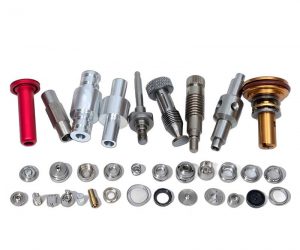Effectively solving common defects in mold processing requires a systematic approach and understanding of the root causes. Here are some strategies to address typical mold processing defects:
- Short Shots (Incomplete Filling): Increase melt temperature, injection pressure, or injection time to ensure adequate material flow. Check for gate blockages, venting issues, or insufficient mold temperature.
- Sink Marks: Adjust wall thickness to avoid abrupt changes, ensure uniform cooling, and use ribs or gussets to reinforce thin sections.
- Warping: Optimize gate location, cooling channels, and part design to minimize residual stresses. Use proper cooling and ejection methods to prevent part distortion.
- Flash: Increase clamping force, improve mold alignment, and use proper venting to prevent excessive material leakage.
- Burn Marks: Reduce melt temperature or injection pressure to prevent material degradation. Ensure proper venting and mold release agents to avoid material sticking.
- Voids/Bubbles: Increase melt temperature, reduce injection speed, or use lower viscosity materials to minimize air entrapment. Optimize gate design and venting to allow air escape.
- Weld Lines: Modify gate location or use multiple gates to improve material flow and avoid weld lines in critical areas.
- Ejector Pin Marks: Optimize ejector pin layout and use appropriate pin sizes to minimize visible marks on the part.
- Part Sticking: Apply mold release agents and adjust ejection parameters to ensure smooth part ejection.
- Parting Line Mismatch: Ensure proper alignment and clamping force during mold assembly to avoid mismatch issues.
- Dimensional Inaccuracy: Verify part design and mold specifications for accuracy, and adjust process parameters to achieve the desired dimensions.
- Black Spots: Use high-quality materials and ensure proper melt temperature control to prevent material degradation.
- Vibration Marks: Optimize injection parameters, reduce melt temperature variations, and improve gate design to minimize vibration effects.
- Overpacking: Adjust packing pressure and time to prevent overpacking, which can lead to part distortion.
- Cracks: Check for material impurities, reduce mold temperature gradients, and adjust processing conditions to avoid stress-related cracking.
Regular maintenance, proper mold cleaning, and ongoing monitoring of processing parameters are also critical to preventing defects and ensuring consistent part quality. Working closely with mold designers and material suppliers can help identify and resolve potential issues early in the machining process. In addition, implementing process control measures, such as statistical process control (SPC), can enhance the stability of the overall machining process and reduce the possibility of defects in mold processing.
Regular maintenance is the key to ensuring long-term stable operation of the mold. By regularly inspecting and maintaining the various parts of the mold, potential faults or wear can be discovered and repaired in time, thereby avoiding production interruptions and quality problems caused by mold failure. Maintenance work includes cleaning the mold surface, replacing worn parts, lubricating moving parts, etc. to ensure the normal operation of the mold and extend its service life.
Proper mold cleaning is also an important step in preventing defects. After each use, the mold surface should be thoroughly cleaned to remove residual plastic material and other impurities. This helps maintain the smoothness and accuracy of the mold and reduces the build-up and clogging of plastic material, thereby reducing the risk of defects. In addition, regular deep cleaning and disinfection can prevent the growth of bacteria and mold, further ensuring the hygiene and quality of the mold.
Continuous monitoring of machining parameters is key to ensuring consistent part quality. By real-time monitoring and recording of parameters such as temperature, pressure, and speed during processing, abnormal conditions can be discovered in a timely manner and corresponding measures can be taken to make adjustments. This helps maintain the stability of the machining process and avoid part size deviations and quality problems caused by parameter fluctuations. At the same time, through the analysis of processing parameters, process parameters can also be optimized to improve production efficiency and product quality.
Working closely with mold designers and material suppliers is an important means of preventing potential problems. Mold designers can design more reasonable and reliable mold structures based on product requirements and process characteristics to reduce the occurrence of defects. Material suppliers can provide high-quality raw materials to ensure stable and consistent performance of plastic materials, thereby reducing the risk of part quality issues. By working closely with designers and suppliers, potential issues can be addressed during the design and manufacturing stages, avoiding later rework and repairs.
Finally, implementing process control measures, such as statistical process control (SPC), can further improve the stability and quality consistency of the machining process. SPC collects and analyzes processing data to identify and control variability in the production process, thereby achieving control and improvement of the processing process. Through SPC, abnormalities in the production process can be discovered in time and corresponding corrective measures can be taken to avoid defects. In addition, SPC can also help formulate reasonable process parameters and quality control standards to improve production efficiency and product quality.
In summary, regular maintenance, proper mold cleaning, continuous monitoring of processing parameters, and collaboration with designers and suppliers are important measures to prevent defects and ensure consistent part quality. Through the implementation of these measures, the stability and quality level of mold processing can be improved, production interruptions and quality problems can be reduced, thereby improving production efficiency and customer satisfaction.
In the process of mold processing, what annoys us most is some common defects. These defects will directly lead to the performance of the workpiece, or even the workpiece can not be used here. Therefore, we must try to avoid some defects when we process the mold. Here is a magic weapon for this problem.
- Reasonably select and trim the grinding wheel. The white corundum grinding wheel is better. Its performance is hard and brittle, and it is easy to generate new cutting edges. Therefore, the cutting force is small, and the grinding heat is small. The medium grain size is used in the grain size, such as 46~60 mesh. The medium soft and soft (ZR1, ZR2 and R1, R2) are used in the hardness of the grinding wheel, that is, the coarse grain and low hardness grinding wheels. Good self excitation can reduce the cutting heat. It is very important to select appropriate grinding wheel during fine grinding. GD single crystal corundum grinding wheel is more suitable for the high vanadium and high molybdenum condition of die steel. When machining hard alloy and quenching materials with high hardness, diamond grinding wheel with organic binder is preferred. The grinding wheel with organic binder has good self grinding performance, and the roughness of the ground workpiece can reach Ra0.2 μ m. In recent years, with the application of new materials, CBN (cubic boron nitride) grinding wheel has shown a very good machining effect, which is superior to other types of grinding wheels in precision machining on CNC forming grinder, coordinate grinder, CNC internal and external grinder. During grinding, the grinding wheel shall be trimmed in time to keep its sharpness. When the grinding wheel is passivated, it will rub and squeeze on the workpiece surface, causing burns on the workpiece surface and reducing the strength.
- The cooling lubricant shall be reasonably used in mold processing to play the three roles of cooling, washing and lubrication, and keep the cooling, lubrication and cleaning, so as to control the grinding heat within the allowable range and prevent the thermal deformation of the workpiece. Improve the cooling conditions during grinding, such as using oil immersed grinding wheel or internally cooled grinding wheel. When the cutting fluid is introduced into the center of the grinding wheel, the cutting fluid can directly enter the grinding area to play an effective cooling role and prevent the workpiece surface from burning.
Mold processing is a vital step in the production of various products, but it can come with its fair share of challenges. Common defects during this process can significantly impact product quality and performance. Fortunately, manufacturers can tackle these issues head-on by implementing a few practical solutions. Let’s explore some of the most frequent defects in mold processing and how to address them effectively.
Warpage
Warpage is one of the most prevalent defects, often caused by uneven cooling of the mold. To combat this issue, manufacturers can adjust the mold design to promote uniform cooling. Additionally, tweaking processing parameters—such as temperature, pressure, and cooling time—can help minimize warpage. Imagine a perfectly shaped product emerging from the mold without the dreaded warping; it’s all about those fine-tuned adjustments!
Sink Marks
Sink marks occur due to shrinkage during the cooling phase, leading to unsightly dimples on the product's surface. To mitigate this problem, manufacturers can increase the cooling time, slow down the injection speed, and boost packing pressure. Another effective strategy is to modify the mold design by increasing wall thickness in areas prone to sink marks. By addressing this issue, manufacturers can achieve a smoother, more appealing finish on their products.
Flashing
Flashing happens when molten plastic seeps out from the mold’s parting line, creating a thin film on the surface. To tackle this, manufacturers can adjust the clamping force, reduce the injection speed, and raise the mold temperature. Modifying the mold design to ensure a proper parting line seal is another effective strategy. Think about how much more professional a product looks without those annoying flash marks—attention to these details makes all the difference!
Short Shots
Short shots occur when the mold cavity fails to fill completely, leading to incomplete products. To resolve this, manufacturers can increase injection pressure, fine-tune temperature settings, and enhance the flow rate. Additionally, modifying the mold design to ensure adequate venting and the appropriate gate size is crucial. Imagine the relief of pulling a perfectly formed part from the mold every time—this proactive approach helps make that a reality!
Surface Imperfections
Surface imperfections like pits, scratches, and bubbles often arise from a poor mold surface finish. To improve this, manufacturers can polish the mold surface, adjust the injection speed, and increase mold temperature. Moreover, modifying the mold design to ensure proper venting and gate size can further enhance surface quality. Picture a flawless, shiny product that catches the eye—achieving that level of quality is entirely possible with the right strategies!
Conclusion
effectively addressing common defects in mold processing is essential for manufacturers looking to enhance product quality and performance. By implementing the tips outlined above—modifying mold designs, adjusting processing parameters, and conducting regular quality checks—manufacturers can significantly reduce defects. This proactive approach not only leads to higher-quality final products but also fosters increased customer satisfaction, improved competitiveness, and greater success in the market. After all, when customers receive a product that exceeds their expectations, they’re likely to return again and again!


